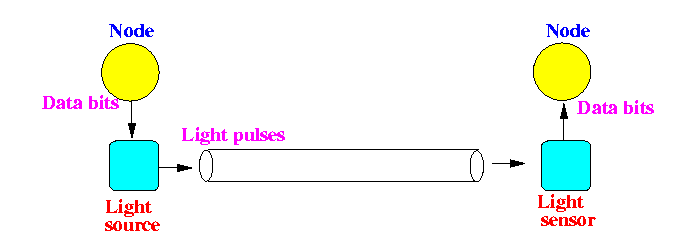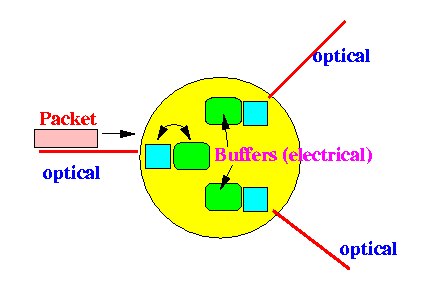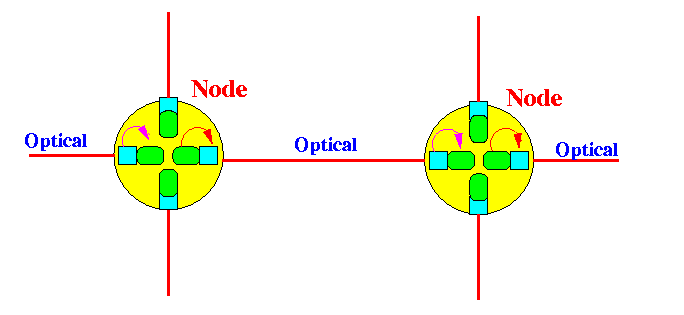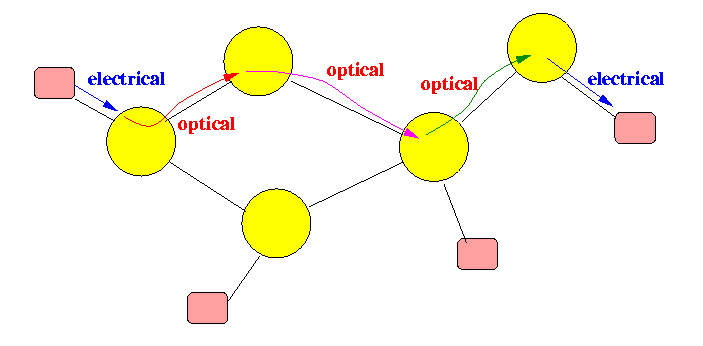- Traditional transmission medium:
- Copper wire
conducting
active electrical signals
- Electrons in the copper medium convey the signals
- Copper wire
conducting
active electrical signals
- Optical transmission:
- An optical fiber
is a thin, flexible, transparent fiber
that acts as a waveguide,
or "light pipe", to
conduct light
between the two ends of the fiber.

- Photons traverse the optical fiber to convey the signals
- An optical fiber
is a thin, flexible, transparent fiber
that acts as a waveguide,
or "light pipe", to
conduct light
between the two ends of the fiber.
- The initial use of
optical fiber is
to replace
the copper communication wires:

- Traditional switching method
using optical fiber:

Notes:
- A packet is received as a
sequence of light pulses
on the optical fiber link
- The packet is the
converted to
bits and
stored in a memory
buffer
- The packet is now in the electrical form !!!
- The router (CPU) examines
the destination address
of the packet and
copy the packet
to its
destination link buffer
- The packet in the buffer is then converted (encoded) into light pulses and sent onto the destination (optical) link
- A packet is received as a
sequence of light pulses
on the optical fiber link
- Packets are forwarded
through the network using
multiple optical/electrical conversions:

- Major bottleneck:
- Memory buffers
have very limited speed
compared to
an optical link
Comparison:
- With a memory clock frequency
of 100 MHz,
current memory technology (DDR3 SDRAM)
gives a
maximum transfer rate
of:
-
6400 MBytes/sec = 51.2 Gbits/sec
- A fiber optical link
can transmit
over 1 Terabits/sec = 1000 Gbits/sec
(Theoretical transmission speed of a fiber optical link is 25 Tbits/sec !!!)
- With a memory clock frequency
of 100 MHz,
current memory technology (DDR3 SDRAM)
gives a
maximum transfer rate
of:
- Memory buffers
have very limited speed
compared to
an optical link
- Conclusion:
- By converting the packet into an electrical representation, the transmission speed is severely limited by the electrical components in the transmission subsystem
- All-optical network
- In an all-optical network, each connection between any 2 nodes is completely optical except at the end nodes of the connection
- Example of an all-optical connection:
